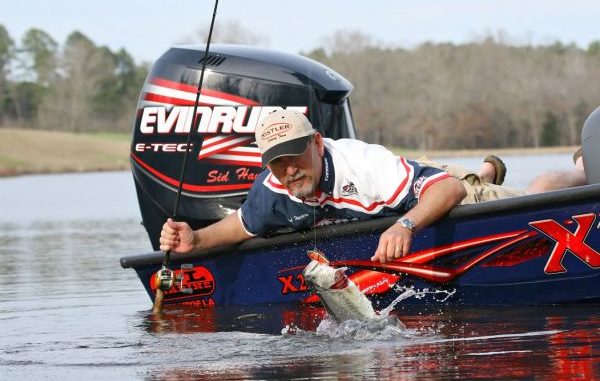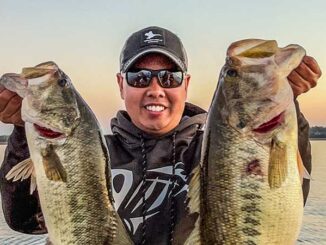
Havard recommends working crawfish-colored Trap both shallow and deep this month
Caney Lake in Jackson Parish is one of those lakes where bass can pull up overnight and then back out just as quickly.
Catching them in 2 feet today doesn’t mean a thing tomorrow, especially if a March cold front pushes through North Louisiana.
That means bass anglers headed to this hallowed water need to tie on lures that are just as adept at mining deep bass as they are at skiing out those that are shallow.
For Local Lake Guide Service owner Sid Havard (318-548-4067), that means tying on a lipless crankbait.
“I love a Rat-L-Trap anywhere,” he said, “but especially at Caney where bass could be deep, shallow, or somewhere in between. Because of its design, I can burn it shallow or yo-yo it deep and catch bass in both places.”
Although he typically likes a 3/4-ounce lipless crankbait, Havard ties on a 1/2-ounce bait for Caney just because it’s easier to keep up high in the water, and he can still fish it deep if he just slows it down.
During March his favorite color is anything that looks like a crawfish. However, he did point out the red shad-colored Rat-L-Trap, which sometimes goes by the name of Rayburn red, as being his most productive color.
Havard likes to begin his search at Caney Lake this month by idling around in three or four different pockets that he has determined receive the most sunshine to find the warmest one. Then he starts fishing at the back of the pocket and works his way out to the mouth.
“I’m gonna get up there shallow and get to smoking and burning it on a high-speed Lew’s 7:1 reel getting all I can get,” Havard said. “Looking for a reaction bite, I’ll position my boat in about 5 or 6 feet of water and cast up into 1 or 2 feet. If the straight burn doesn’t work, then I’ll slow it down and let it follow the contour of the bottom.”
If Havard determines bass aren’t shallow, he backs out to the mouth of the pocket and starts idling over the points in 10- to 20-feet of water to see if he can find them stacked up on his fish finder.
Although he admits he can’t be sure what he sees on his screen is bass, he tosses out a marker buoy anyway and backs off a cast length.
“Once my bait hits the water, I start stripping line so my Trap falls all the way to the bottom,”he said. “When my line goes slack, I tighten up and just pull it up and let it flutter back down. But as it falls back, I make sure to follow it with kind of a tight line so it doesn’t get all fouled up.”
Havard says that if the bass have pulled out deep on the points, it doesn’t take but a couple rod pumps to know it.
“Sometimes they’ll just tick it, but most of the time they’ll slam it so hard it’ll jerk the rod out of your hand,” he said.
Lipless crankbaits are known for being dynamite baits around shallow grass flats, and Havard reported there is some grass coming back at Caney, but not too many people would even consider fishing them around boat docks.
“That’s a mistake at Caney,” Havard said. “Sometimes these bass will load up on the boat houses, and you can train wreck them pulling a Trap down the walkway or in a boat stall. I ease up to a boathouse and pitch my Trap like I would a worm or jig.
“I might only get a 20-foot pull out of it, but that’s all it takes.”
Editor’s Note: This is the fourth article in a weeklong series by Chris Ginn on effective bass baits in March for locations around the state. Previously, he covered the Red River, Delacroix to Bayou Black and Lake D’Arbonne. Tomorrow he’ll highlight Toledo Bend.


